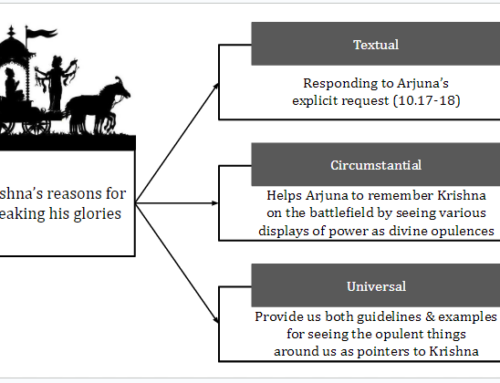Desires are often thought of as enemies for seekers because they entangle us in material things. The Bhagavad-gita (13.22) stresses that the desire to enjoy rivets the non-material soul to matter.
For attaining liberation, the path of yoga requires that we eliminate all desire. However, desirelessness is unnatural. We are essentially conscious beings. And being conscious, we perceive things and subsequently experience desires in relation with those things.
Bhakti wisdom clarifies that our entanglement is caused not by desire per se, but by misdirected desire. The Gita (10.41) explains that the attractiveness of all objects is a spark of Krishna’s all-attractiveness. This implies that while those objects can give us a spark of pleasure, Krishna alone can give complete fulfillment. When we see those objects’ attractiveness separate from Krishna’s all-attractiveness, the resulting desires misdirect us away from him.
But Gita wisdom redirects our desires by helping us remember that the attractiveness of those objects comes from Krishna. As we become thus absorbed in him, the resulting spiritual fulfillment decreases the lure of worldly enjoyment. Just as snakes become harmless when their fangs are removed, our desires become harmless when they no longer drag us away from Krishna.
Devotion can make our desires not only harmless but also helpful. Just as an animal when domesticated helps its master, so too can our desires propel us towards Krishna when we desire to know him, love him and serve him. For example, Arjuna’s desire to hear Krishna’s glories (10.18) enlivens and enlightens him.
Thus, spiritual growth centers on not desirelessness, but increasing desire for Krishna. By practicing bhakti-yoga steadily, our devotional desires to love and serve Krishna grow stronger and bigger till they automatically overpower and oust entangling desires. Thereafter, our defanged and domesticated desires drive us energetically and joyfully towards the supreme liberation in Krishna.
To know more about this verse, please click on the image
Explanation of article:
Podcast:



Leave A Comment